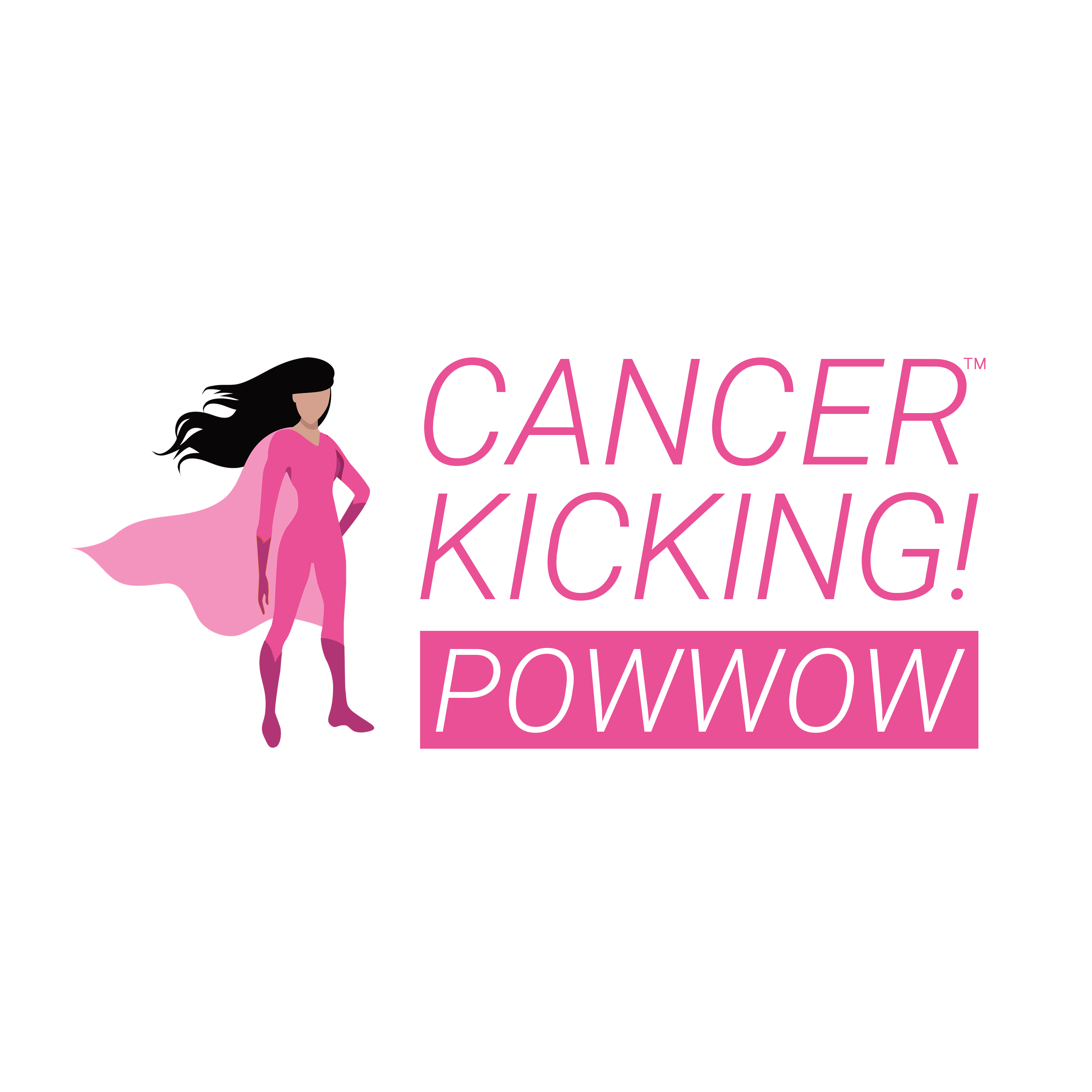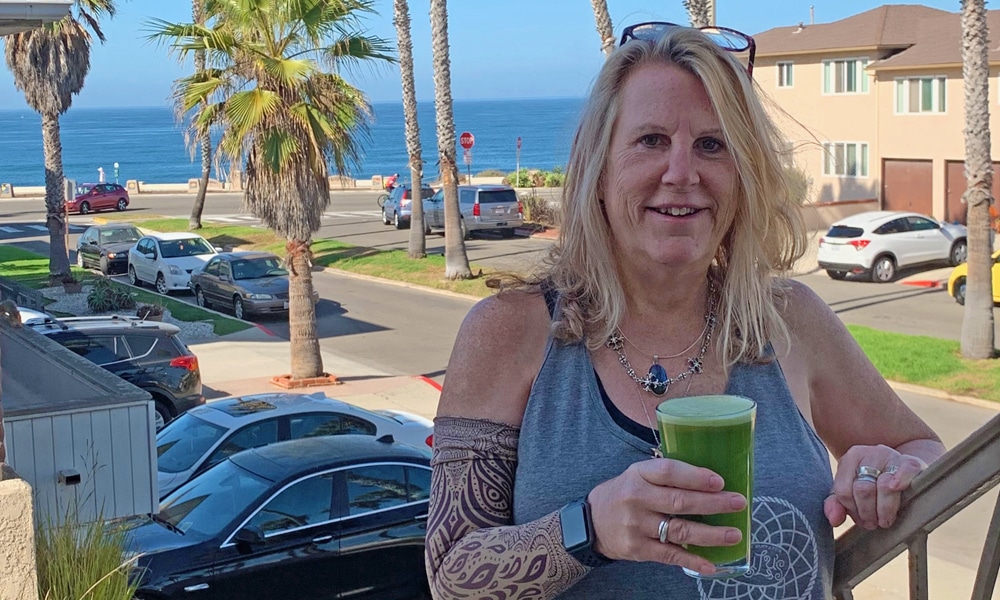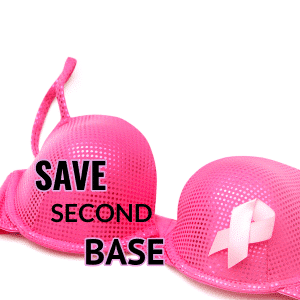Sugar is seemingly everywhere, from our favorite desserts to some of our go-to health foods that appear to be otherwise nutritionally sound. Added sugar continues to make its way into a multitude of foods despite its long reputation of being something to avoid. What does a constant stream of sugar do to the body and how is sugar consumption related to cancer?
![]()
![]()
![]()
![]()
![]()
![]()
![]()
![]()
![]()
![]()
![]()
![]()
![]()
![]()
![]()
![]()
![]()
![]()
![]()
![]()
![]()
![]()
![]()
![]()
![]()
![]()
![]()
![]()
![]()
![]()
![]()
![]()
![]()
![]()
Natural vs. Added Sugars
Not all sugars are created equally. When we’re talking about sugar and health, it’s important to clarify the main differences between the many forms it can come in.
When you hear the term “sugar”, you might immediately think of sweet treats in the dessert aisle like cookies, cake, donuts, and ice cream. But when you search “sugar and health” on the internet, you’ll also find articles talking about the sugar content of healthy foods, like berries, bananas, carrots, and apples. Even Dr. Kristi Funk uses such ingredients in her famous Antioxidant Smoothie, so what’s the deal?
There are two main categories of sugar: natural sugars and added sugars.
Certain types of sugar are found naturally in certain foods, meaning that it hasn’t been added to them. While food labeling and packaging claims can be highly misleading, making us think something must be healthy because it contains “naturally-derived” sugars, there are really only two forms of natural sugar. These include lactose (found in dairy products like milk) and fructose (found in fruit).
Over 11 hours of video content are now available to stream from any device. If you cannot attend our annual Summit at Terranea Resort, sign up for the Virtual Summit instead and get the same information from the in-person Summit in the convenience of your own home.
Nutritionally speaking, lactose and fructose are purely carbohydrates. They are naturally found in foods that tend to offer more health benefits than highly processed, packaged food items. However, note that it’s a good idea to limit or avoid lactose-containing foods altogether, as many studies show a likely correlation between regular dairy consumption and an increased breast cancer risk.[1] On the other hand, fructose-containing fruits and vegetables are excellent sources of vitamins, minerals, fiber, and antioxidants, nutrients you won’t find in processed junk foods and sugary beverages.
Some of the more fructose-rich plant foods include mangos, cherries, bananas, apples, and oranges, as well as starchy vegetables like potatoes, corn, carrots, and beets. However, this type of natural sugar doesn’t have quite the same effects on your body as added sugar. The natural sugar found in fruits and veggies is paired with healthy nutrients like fiber, which prevent blood sugar spikes and help you feel fuller for longer periods of time.
Added sugar, however, is exactly what it sounds like – it is added to a food where it doesn’t naturally exist. You might think of this as refined, white sugar added to a batch of cookies or a cake you’re baking. This common table sugar is also called sucrose.
"*" indicates required fields We’ve been working hard on this. Add your e-mail address and we will tell you as soon as it launches.
We’ve been working hard on this. Add your e-mail address and we will tell you as soon as it launches.
Whether it comes in the form of granulated table sugar, brown sugar, turbinado or raw sugar, or high fructose corn syrup, these are all added sugars used as sweetening agents. The most obvious added sugars in the Western diet include soft drinks, fruit juices, energy drinks, baked goods and desserts, ice cream, candy, and highly processed packaged snack foods. These types of foods are rich in added sugar and tend to be calorie-dense but contain few nutrients that are actually beneficial to our health. However, a walk down the grocery isle and review of nutrition labels will reveal the incredibly high number of items that contain one form of added sugar or another, most often high fructose corn syrup – often in items you would not even expect to find any sugar.
How Much Sugar Do You Eat?
It’s easy to go day to day making our food choices and not thinking too much about the added sugar content of what we eat. As it turns out, it might be eye-opening for many of us to examine our intake after all.
Surveys show that the average American adult eats nearly 77 grams of added sugar on a daily basis. This amount is even higher for many children.[2] For reference, just one can of soda can contain 40 grams of sugar.
This is substantially more sugar than the maximum daily amount recommended by leading health experts, which falls around 25 grams (6 teaspoons, or 100 calories) for women and 37 grams (9 teaspoons, or 150 calories) for men.[3] Do you know how much sugar you’re eating?
Stay Connected
Stay Connected
Sugar, Obesity, and Chronic Disease
When it comes down to it, the less added sugar you’re regularly consuming, the better it is for your health outcomes. Decades of research have supported a correlation between excessive consumption of added sugar and an increased risk for inflammation and largely preventable chronic disease. This appears to be especially true when a diet high in sugar is also lacking in micronutrients.[4]
Diets that are high in sugary foods tend to be calorically-dense and nutrient-poor. In other words, the highly processed foods that make up much of the standard Western diet are typically higher in calories, but lacking important nutrients like fiber, complex carbohydrates, vitamins, minerals, and disease-fighting antioxidants found in whole, minimally processed plant foods.[5]
Just like trying to make a car run well without the proper fuel, a nutritionally inadequate diet can set you up to worsen your health outcomes. A typical Western diet, high in added sugar as well as sodium and saturated fat, sees a higher incidence of chronic diseases like type 2 diabetes, heart disease, and cancer.[6] Regular consumption of sugary foods can trigger inflammation in your body and may also lead to insulin resistance, which is linked to poorer health outcomes.[7]
Over 11 hours of video content are now available to stream from any device. If you cannot attend our annual Summit at Terranea Resort, sign up for the Virtual Summit instead and get the same information from the in-person Summit in the convenience of your own home.
Excessive consumption of foods high in added sugar, which tend to be high in empty calories, can also lead to becoming overweight or obese. Obesity, or the condition of being excessively overweight, is associated with the leading causes of preventable death worldwide, including those chronic diseases mentioned above.[8] Not to mention, some research suggests an addictive effect of sugar on the brain, which can ultimately make us more prone to overeating these types of less healthy foods.[9]
Sugar and Breast Cancer
Obesity has been identified as a major risk factor for cancer. Research estimates that at least 20% of cancer cases are directly caused by being obese, with other malignancies being influenced by other factors in a person’s lifestyle, such as diet, exercise, and body fat distribution.[10]
How does this relate to sugar consumption? Just as cancer risk cannot be attributed to any one single factor, sugar in and of itself does not cause cancer. That being said, the overconsumption of added sugar and the foods typically made with it can increase your risk for cancer.
In addition to raising your risk for inflammation and chronic disease, obesity also increases the amounts of the hormone estrogen circulating and stored in your body. This is because adipose tissue, where our fat is stored, produces excess amounts of estrogen. As such, when you have higher amounts of adipose tissue, you will also have higher amounts of circulating estrogen, which can stimulate the growth and development of certain types of breast cancer tumors.[11]
Many studies have found that postmenopausal women with a higher BMI, or body mass index, have a higher incidence of breast cancer when compared to women who have a lower BMI. For instance, a 2008 study published in The Lancet found that incremental increases in BMI were associated with a 12% increase in breast cancer risk among postmenopausal women.[12] And a 2014 study found that postmenopausal women who are obese have a 20-40% higher risk of breast cancer than women who fall in healthy weight ranges.[13]
Overweight and obese postmenopausal women have been found to have higher levels of estrogen in their bodies when compared to those of normal weight women.[14] After menopause, the ovaries contribute negligible amounts of estrogen to the body. Thus, many researchers suggest that the higher levels of estrogen observed among obese postmenopausal women more likely have to do with the conversion of androgens to estrogens in adipose tissue.[15] What’s more, being obese has been related to a later cancer stage upon diagnosis as well as bigger tumors, which can influence a woman’s survival rates.[14]
In a 2014 meta-analysis of 82 studies including 213,075 women and 41,477 deaths, published in Annals of Oncology, researchers found a 41% higher risk of total mortality and a 35% risk of breast cancer specific mortality for obese women compared to normal weight women. Even more alarming than the earlier research, they found that for every 5-unit increase in BMI, there was an 18% increase in risk for breast cancer mortality. The authors also found a relationship between death rate and BMI at breast cancer diagnosis, shortly after diagnosis, and more than one year following diagnosis. This further supported a relationship between obesity and poor outcomes from breast cancer over time.[16]
Additionally, some studies have found that nutrient-poor, high sugar diets that cause blood sugar levels to spike are associated with a higher risk for several cancers, including breast cancer. This is thought to be because higher levels of blood sugar and insulin are risk factors for cancer.[17] High insulin levels may trigger cell division, which may promote growth of cancer cells.[18]
All in all, cancer is a complex disease influenced by a number of factors. Because of the strong research around diets high in added sugar, obesity, and breast cancer risk and outcomes, being aware of your added sugar intake – and doing what you can to reduce it – is prudent. While we can’t control all of our health outcomes, we can control many of the food choices we make on a daily basis.
How to Reduce Your Added Sugar Intake
If you think your diet contains more added sugar than you would like, there are a number of ways you can start to reduce your intake.
A good place to start is by writing down all of the foods you eat for a few days. Make sure these are typical days (e.g., not while you’re on vacation or spending time somewhere out of the ordinary) so they reflect what you would normally be eating. Then, you can go back and identify which foods and beverages are contributing the most added sugar to your diet.
You might be surprised to find out how many of your regular food choices contain added sugar, and just how much sugar they might be contributing to your overall diet.
If this is the case for you, here are some ways you might reduce the amount of sugar in your everyday diet:
- Replace sugar-containing salad dressings with balsamic vinegar or homemade nut- or miso-based dressings.
- In place of canned sauces, try making your own pasta and pizza sauces at home using fresh veggies, Italian seasonings, and no sugar added diced tomatoes. These can be batch cooked and stored in the freezer for later use.
- Try natural sweetening agents like blended or chopped pitted dates, in place of added sugar, when making homemade desserts like energy balls or muffins.
- Top your pancakes or waffles with natural nut butters and fresh fruit in place of maple syrup.
- Reduce consumption of sugary condiments (e.g., ketchup, barbecue sauce) or try making your own at home with low-sugar ingredients. Alternatively, use condiments that tend to have less sugar, such as salsa or mustard.
- Choose unsweetened plant-based milks (e.g., soy, pea, oat, hemp, almond, cashew) in place of sweetened ones.
- When stocking your pantry with canned goods, choose canned foods without sugar added. For instance, get fruit canned in water or “its own juices” instead of heavy syrup.
- Replace boxed breakfast cereals and packaged oatmeals, which can pack a lot of added sugar in a small portion, with unsweetened cereals. You can also make oatmeal from scratch using rolled oats.
- Get rid of fruit juice, soft drinks, lemonade, and sports or energy drinks. Make plain water or seltzer water with no additives your beverage of choice. You can even add some flavor to your water with fresh berries, cucumber slices, or lemon and lime wedges.
- Try unsweetened herbal or fruit teas, hot or cold.
- Swap out sweetened plant yogurts with unsweetened. Instead, add natural sweetness to these by topping them with berries or other fresh-cut fruit.
- Enjoy fresh fruit, like blueberries and strawberries, mango, or frozen grapes for dessert in place of traditional sweets. Alternatively, try a “dessert swap”, making fruit the focus of your plate instead of the dessert itself.
- Keep fresh fruit and cut veggies ready to grab-and-go so they’re accessible when you’re looking for something to snack on. Even pitted dates filled with a bit of nut butter make a naturally sweet and satisfying snack.
- Read nutrition facts labels on packaged foods to avoid excessive amounts of sugar that can lurk in small serving sizes. For instance, choose nut butters that only contain nuts and salt.
- Choose whole plant foods as much as possible. These are naturally free from added sugars and will also contribute high-quality nutrients to your diet that sugary and packaged foods won’t.
Be sure to check out our Cancer-Kicking! Kitchen, a growing resource of delicious, healthy recipes that are naturally low in added sugar and high in cancer-fighting nutrition.
Retraining Your Palate
You’ve probably experienced somewhat sudden taste changes before, whether from an illness, infection, or burning your mouth on a hot beverage. But did you know that your taste palate actually turns over on its own about every couple of weeks? This means that we always have the opportunity to “turn over a new leaf” in terms of retraining your flavor preferences, which should be great news to anyone feeling like their sweet tooth is driving the bus right now.
In fact, our nearly 10,000 adult taste buds regenerate regularly on both a cellular and functional level. A 2006 animal study published in Neuroscience found that taste buds turnover around every 10 days, while additional research from 2010 suggests that 10% of our taste buds turnover every single day.[19][20]
Whatever the case, this essentially gives us all an opportunity to learn to love foods we didn’t like the taste of before, and learn how to adjust to different flavors when we reduce or remove added sugar from our diet.
Think about how your flavor preferences have changed from childhood into adulthood, or even how your child may have warmed up to certain foods over time. As long as we’re willing to introduce our bodies to new, healthier flavors, we absolutely have the chance to pivot toward a new, healthier palate that serves us well throughout life.
Start by making some of the swaps and changes listed above and noticing how your palate adjusts over time. Eventually you may even notice that you crave fruit for dessert over a super-sweet cookie.
Best Diet for Breast Cancer Risk Reduction
While even the perfect diet is unfortunately not foolproof against breast cancer, there are some things to keep in mind to help lower your risk through food and keep your body healthy.
Although estimates vary and many factors are in play, some studies suggest that by switching to a diet that is low in added sugar, and high in whole, minimally processed foods, you may enjoy up to a 60-70% lower risk for breast cancer.[21]
This includes minimizing your intake of simple added sugars by reducing, or eliminating, foods and beverages that are typically high sugar contributors, such as baked goods, soda, fruit juice, sports drinks, cookies, donuts, and ice cream. The best anti-cancer diet also eliminates, or at least limits, meats, poultry, fish, eggs, and dairy products, saturated fats, processed foods, refined cereals, oils, and salt.
Instead, base your diet on whole plant foods as much as possible. This is a diet that prioritizes fruits, vegetables, 100% whole grains (e.g., quinoa, oats, farro, popcorn, whole rye, whole barley, buckwheat, whole wheat couscous, wild or brown rice), nuts, seeds, and legumes (beans, peas, and lentils). These foods are naturally low in sugar and high in the nutrients that can best help protect your health.
References
- Fraser GE, Jaceldo-Siegl K, Orlich M, Mashchak A, Sirirat R, Knutsen S. Dairy, soy, and risk of breast cancer: those confounded milks. Int J Epidemiol. 2020 Feb 25:dyaa007.
- “How much sugar is too much?” American Heart Association. Accessed 29 Oct 2020. Available from: https://www.heart.org/en/healthy-living/healthy-eating/eat-smart/sugar/how-much-sugar-is-too-much
- “Added sugars.” American Heart Association. Accessed 29 Oct 2020. Available from: https://www.heart.org/en/healthy-living/healthy-eating/eat-smart/sugar/added-sugars
- López-Alarcón M, Perichart-Perera O, Flores-Huerta S, Inda-Icaza P, Rodríguez-Cruz M, Armenta-Álvarez A, Bram-Falcón MT, Mayorga-Ochoa M. Excessive refined carbohydrates and scarce micronutrients intakes increase inflammatory mediators and insulin resistance in prepubertal and pubertal obese children independently of obesity. Mediators Inflamm. 2014;2014:849031.
- Drake I, Sonestedt E, Ericson U, Wallström P, Orho-Melander M. A Western dietary pattern is prospectively associated with cardio-metabolic traits and incidence of metabolic syndrome. Br J Nutr. 2018 May;119(10):1168-1176.
- Christ A, Lauterbach M, Latz E. Western Diet and the Immune System: An Inflammatory Connection. Immunity. 2019 Nov 19;51(5):794-811.
- Orgel E, Mittelman SD. The links between insulin resistance, diabetes, and cancer. Curr Diab Rep. 2013;13(2):213-222.
- “Adult obesity causes & consequences.” CDC.gov. Accessed 28 Oct 2020. Available from: https://www.cdc.gov/obesity/adult/causes.html.
- Tryon MS, Stanhope KL, Epel ES, et al. Excessive Sugar Consumption May Be a Difficult Habit to Break: A View From the Brain and Body. J Clin Endocrinol Metab. 2015;100(6):2239-2247.
- De Pergola G, Silvestris F. Obesity as a major risk factor for cancer. J Obes. 2013;2013:291546.
- “Obesity and cancer.” Cancer.gov. Accessed 30 Oct 2020. Available from: https://www.cancer.gov/about-cancer/causes-prevention/risk/obesity/obesity-fact-sheet
- Renehan AG, Tyson M, Egger M, Heller RF, Zwahlen M. Body-mass index and incidence of cancer: a systematic review and meta-analysis of prospective observational studies. Lancet. 2008 Feb 16;371(9612):569-78.
- Munsell MF, Sprague BL, Berry DA, Chisholm G, Trentham-Dietz A. Body mass index and breast cancer risk according to postmenopausal estrogen-progestin use and hormone receptor status. Epidemiol Rev. 2014;36(1):114-36.
- Kroenke CH, Chen WY, Rosner B, Holmes MD. Weight, Weight Gain, and Survival After Breast Cancer Diagnosis. J Clin Oncol. 2005;23:7,1370-1378
- Freeman EW, Sammel MD, Lin H, Gracia CR. Obesity and reproductive hormone levels in the transition to menopause. Menopause. 2010;17(4):718-726.
- Chan DSM, Vieira AR, Aune D, Bandera EV, Greenwood DC, McTiernan A, Navarro Rosenblatt D, Thune I, Vieira R, Norat T. Body mass index and survival in women with breast cancer-systematic literature review and meta-analysis of 82 follow-up studies. Ann Oncol. 2014 Oct;25(10):1901-1914.
- Romieu I, Ferrari P, Rinaldi S, Slimani N, Jenab M, Olsen A, & Tjonneland A, et al. Dietary glycemic index and glycemic load and breast cancer risk in the European Prospective Investigation into Cancer and Nutrition (EPIC). Am J Clin Nutr. 2012 Aug;96(2):345-55.
- Rose DP, Vona-Davis L. The cellular and molecular mechanisms by which insulin influences breast cancer risk and progression. Endocr Relat Cancer. 2012 Nov 9;19(6):R225-41.
- Hamamichi R, Asano-Miyoshi M, Emori Y. Taste bud contains both short-lived and long-lived cell populations. Neuroscience. 2006 Sep 15;141(4):2129-38.
- Miura H, Barlow LA. Taste bud regeneration and the search for taste progenitor cells. Arch Ital Biol. 2010;148(2):107-118.
- Donaldson MS. Nutrition and cancer: a review of the evidence for an anti-cancer diet. Nutr J. 2004 Oct 20;3:19.




























